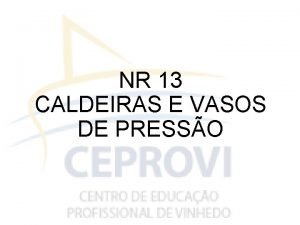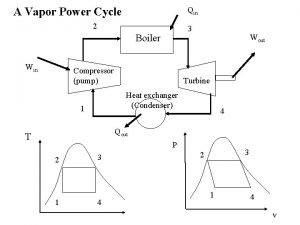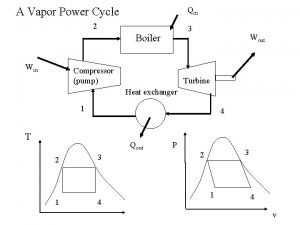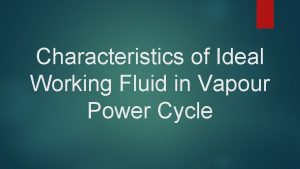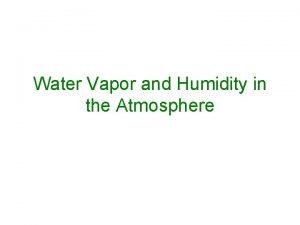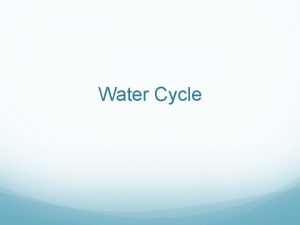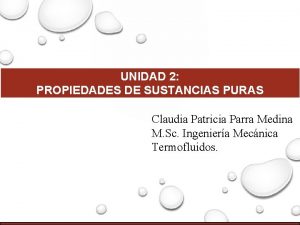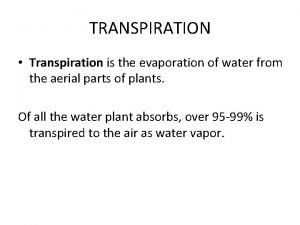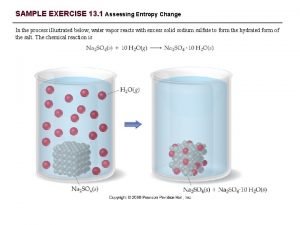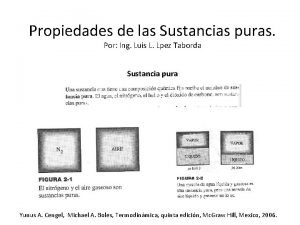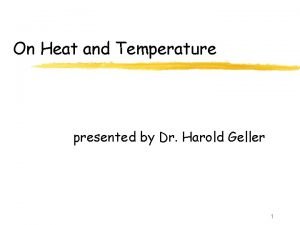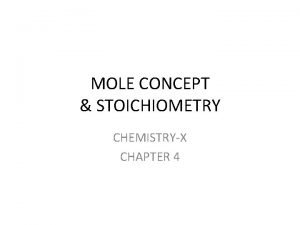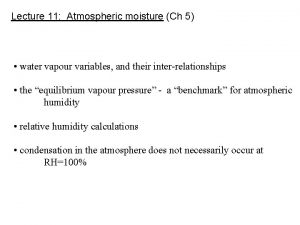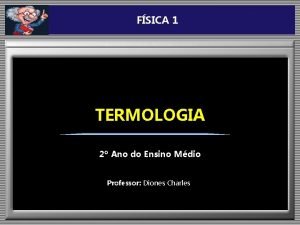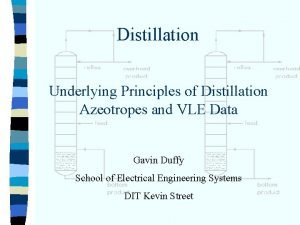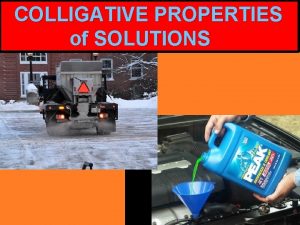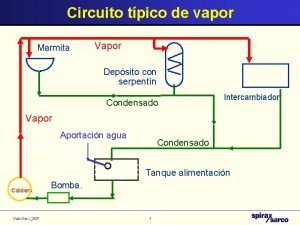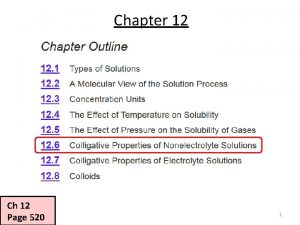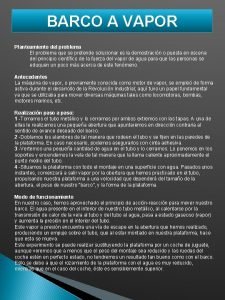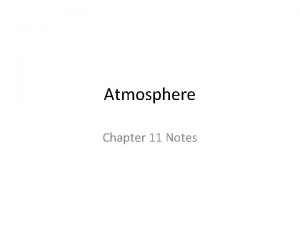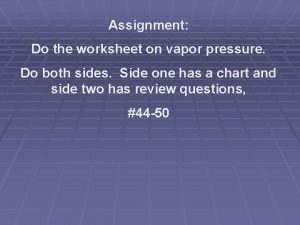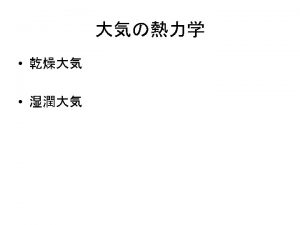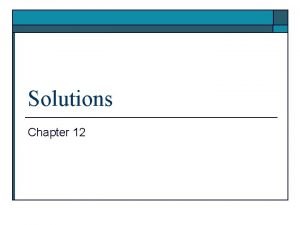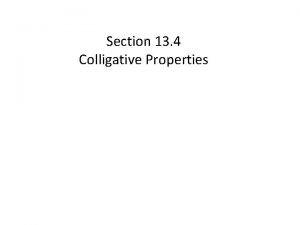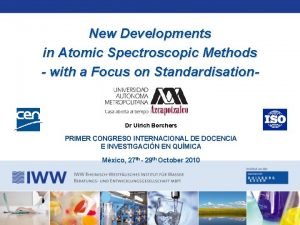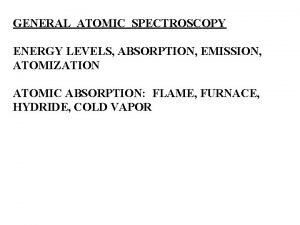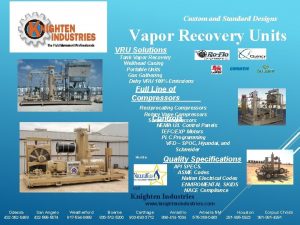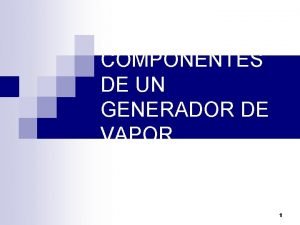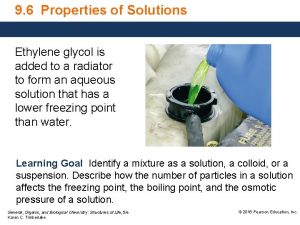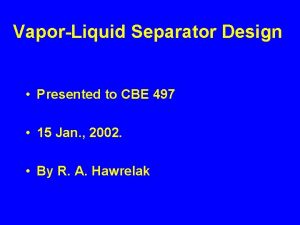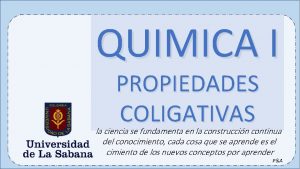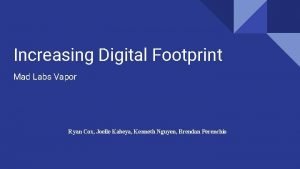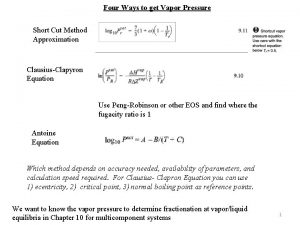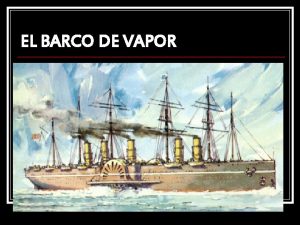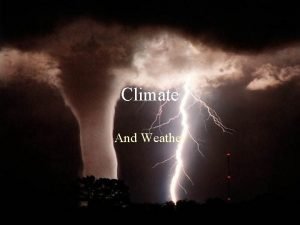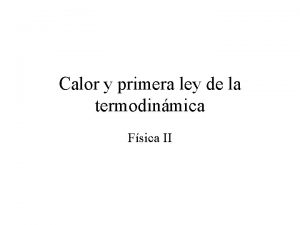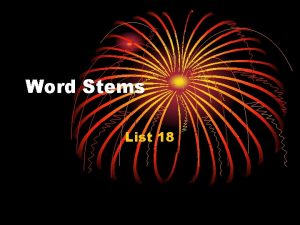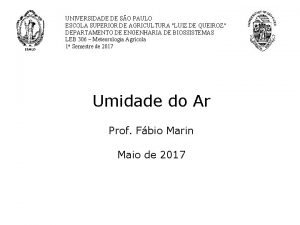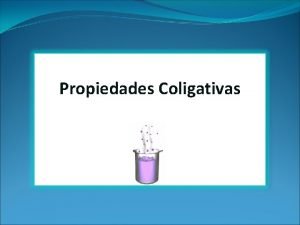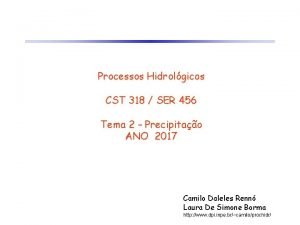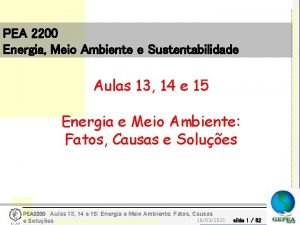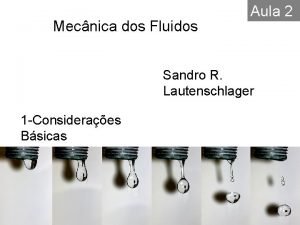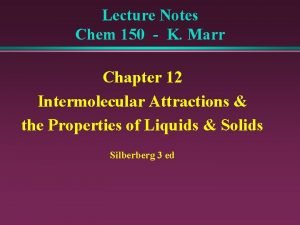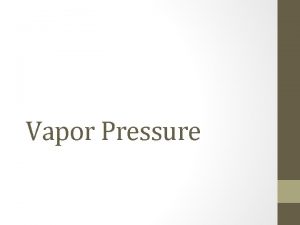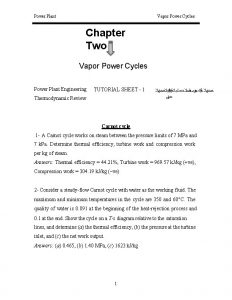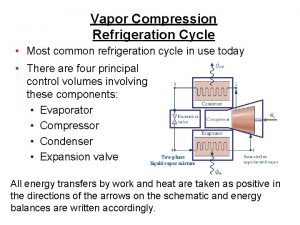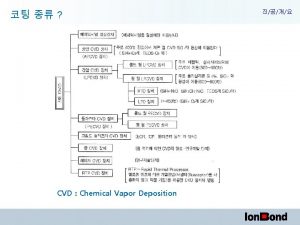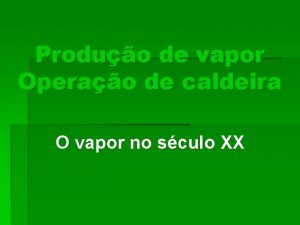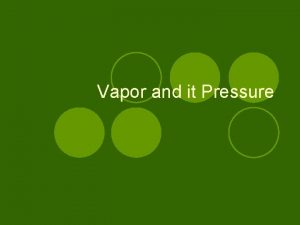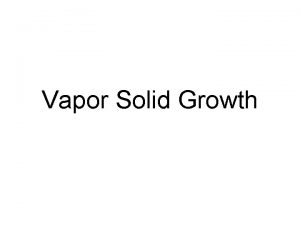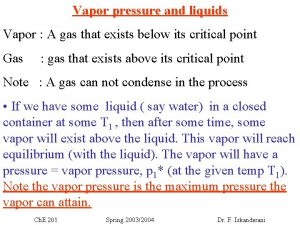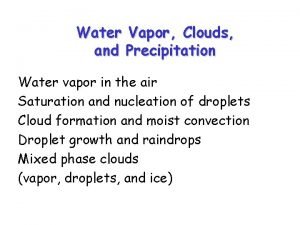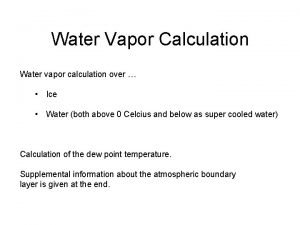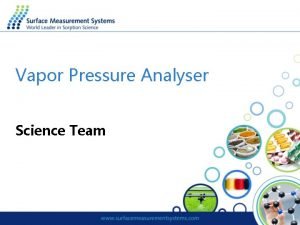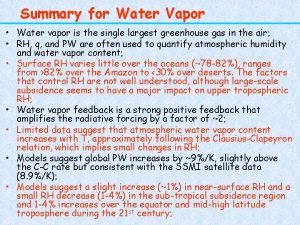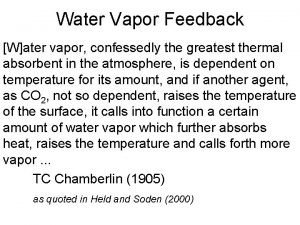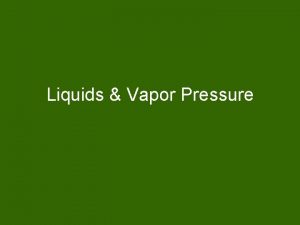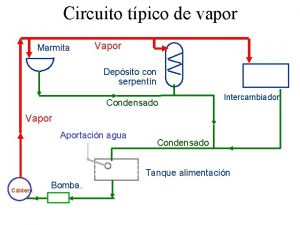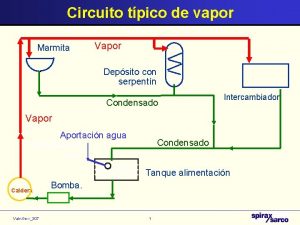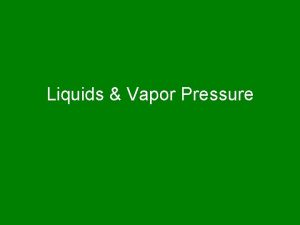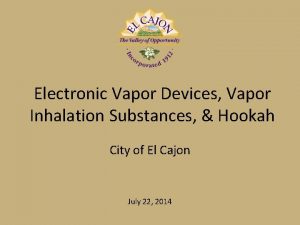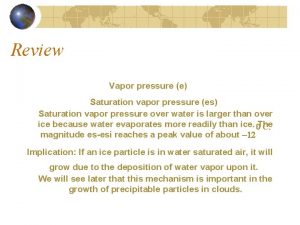Chapter 9 o Vapor Power Cycle 9 1



















































- Slides: 51

Chapter 9 o Vapor Power Cycle 蒸汽动力循环 9. 1 Basic Power Cycle using Water Vapor--Rankine Cycle (基本蒸汽动力循环---朗肯循环) o 9. 2 The Diesel Cycle (狄塞尔循环) o 9. 3 燃气轮机装置循环





RANKINE CYCLE

RANKINE CYCLE o o 1 2 Saturated or superheated steam enters the turbine at state 1, where it expands isentropically to the exit pressure at state 2. 2 3 The steam is then condensed at constant pressure and temperature to a saturated liquid, state 3. The heat removed from the steam in the condenser is typically transferred to the cooling water. 3 4 The saturated liquid then flows through the pump which increases the pressure to the boiler pressure (state 4). 4 1 the water is first heated to the saturation temperature, boiled and typically superheated to state 1. Then the whole cycle is repeated.






3. 如何提高朗肯循环的热效率 How can we increase the efficiency of the Rankine cycle T 1 5 6 影响热效率的参数 ? 4 3 p 1 2 s t 1 p 2




§ 10 -2 蒸汽回热循环与再热循环 (regenerative cycle and reheat cycle) 1. 蒸汽回热循环(regenerative) 抽汽式回热 Feedwater heater 抽汽 冷凝水 Closed Feed water heater 去凝汽器 表面式回热器 抽汽 给水 冷凝水 Open Feedwater heater 混合式回热器






2. 蒸汽再热循环 (reheat cycle) 1 T 5 6 b 4 3 s When steam leaves the turbine, it is typically wet. The presense of water causes erosion of the turbine blades. To prevent this, steam extracted from high pressure turbine (state 2), and then it is reheated in the boiler (state 2') and sent back to the low pressure turbine








§ 10 -4 Internal combustion engines (内燃机) 1. The Otto Cycle (奥托循环) (1) Actual cycle (实际循环) The Otto cycle is an idealization of a set of processes used by spark ignition internal combustion engines (2 -stroke or 4 -stroke cycles).


Otto循环 a) ingest a mixture of fuel and air, b) compress it, c) cause it to react, thus effectively adding heat through converting chemical energy into thermal energy, d) expand the combustion products, and then e) eject the combustion products and replace them with a new charge of fuel and air.

_ (2) Otto循环的简化 We model all of these happenings by a thermodynamic cycle consisting of a set of processes all acting on a fixed mass of air contained in a piston-cylinder arrangement. The exhaust and intake processes are replaced by constant-volume cooling. )


Representation of thermodynamic cycle. 1’ - 2 Compress mixture quasi-statically and adiabatically 2 - 3 Ignite and burn mixture at constant volume (heat is added) 3 (4)- 5 Expand mixture quasi-statically and adiabatically 5 - 1’’ Cool mixture at constant volume


2. The Diesel Cycle (狄塞尔循环) The diesel internal combustion engine differs from the gasoline powered Otto cycle by using a higher compression of the fuel to ignite the fuel rather than using a spark plug ("compression ignition" rather than "spark ignition")




3. The Dual Cycle (混合加热循环 )









 Nr-13
Nr-13 Vapor power cycle
Vapor power cycle Carnot vapor power cycle
Carnot vapor power cycle Ideal fluid characteristics
Ideal fluid characteristics Power trianlge
Power trianlge Chapter 5 two-cycle and four-cycle engines answers
Chapter 5 two-cycle and four-cycle engines answers Clausius clapeyron equation
Clausius clapeyron equation What is the earth called a blue planet
What is the earth called a blue planet Diagrama t-v de una sustancia pura
Diagrama t-v de una sustancia pura Diffusion shells transpiration
Diffusion shells transpiration Solve exercise
Solve exercise Diagrama p-v agua
Diagrama p-v agua Maquina de vapor y sus partes
Maquina de vapor y sus partes The capacity of air to hold water vapor
The capacity of air to hold water vapor Vapour density formula
Vapour density formula Vapor pressure of water equation
Vapor pressure of water equation O que é temperatura
O que é temperatura Relative volatility formula
Relative volatility formula What is vapor pressure lowering
What is vapor pressure lowering Circuito tipico de vapor
Circuito tipico de vapor What is vapor pressure lowering
What is vapor pressure lowering Barco de vapor experimento
Barco de vapor experimento Water vapor in the atmosphere percentage
Water vapor in the atmosphere percentage Vapor pressure and boiling worksheet
Vapor pressure and boiling worksheet Water vapor mixing ratio
Water vapor mixing ratio Devito stage model
Devito stage model Vapor pressure lowering
Vapor pressure lowering Which of the following involves a colligative property
Which of the following involves a colligative property Explain depression in freezing point
Explain depression in freezing point Cold vapor atomic fluorescence spectrometry
Cold vapor atomic fluorescence spectrometry Vapor trail background
Vapor trail background Cold vapor atomic fluorescence spectrometry
Cold vapor atomic fluorescence spectrometry Vru vapor recovery unit
Vru vapor recovery unit Componentes de un generador de vapor
Componentes de un generador de vapor Vapor pressure lowering
Vapor pressure lowering The vapor pressure of pure water at 110 c is 1070 torr
The vapor pressure of pure water at 110 c is 1070 torr Porta test separator
Porta test separator Marginal vapor rate method
Marginal vapor rate method Constante ebulloscópica fórmula
Constante ebulloscópica fórmula Mad labs vapor
Mad labs vapor Shortcut vapor pressure equation
Shortcut vapor pressure equation Barco de vapor creador
Barco de vapor creador Highest clouds
Highest clouds Calor especifico del metal
Calor especifico del metal Stems list 1
Stems list 1 Observe a figura abaixo:
Observe a figura abaixo: Explicacao
Explicacao Propiedades coligativas
Propiedades coligativas Pressão de vapor
Pressão de vapor Pea
Pea Pressão de vapor
Pressão de vapor Factors affecting vapor pressure
Factors affecting vapor pressure
